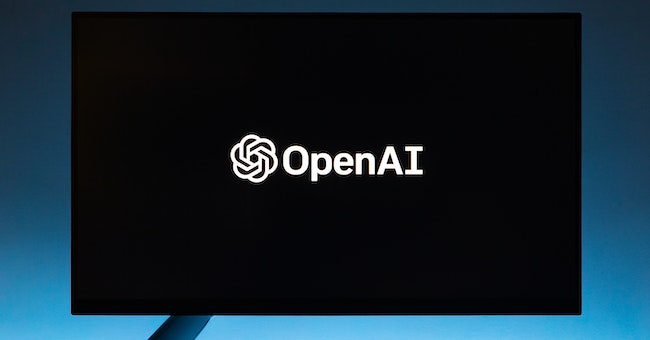Decoding the Contrasts: Deep Learning vs Neural Networks Dissected

Introduction
Deep learning and neural networks are two terms that often appear in discussions about artificial intelligence and machine learning. While they are related concepts, they have distinct characteristics and applications. Deep learning is a subset of neural networks that focuses on training complex models with multiple layers to perform tasks such as image recognition, natural language processing, and speech recognition. Neural networks, on the other hand, refer to a broader class of models inspired by the structure and functioning of the human brain. They consist of interconnected nodes, or neurons, that process and transmit information.
Understanding the differences between deep learning and neural networks is crucial for professionals and enthusiasts in the field of machine learning. It enables them to choose the appropriate model for specific tasks and optimize their approach to achieve the desired outcomes. Moreover, it helps in gaining insights into the strengths and limitations of each approach, leading to more informed decisions and advancements in the field.
Deep Learning
Deep Learning Introduction
Deep learning is a subfield of machine learning that focuses on training artificial neural networks with multiple layers, hence the term "deep." It is inspired by the structure and functioning of the human brain, particularly the interconnectedness of neurons.
In traditional machine learning approaches, feature extraction and engineering are often required to represent the input data in a suitable format. However, deep learning aims to automate the feature extraction process by allowing the neural network to learn hierarchical representations directly from raw data. This makes it especially powerful in domains where raw, unstructured data, such as images, audio, and text, is abundant.
At the core of deep learning are artificial neural networks (ANNs), which consist of interconnected layers of artificial neurons called nodes. Each node receives input signals, performs a mathematical operation on them, and produces an output signal. The connections between nodes transmit these signals, allowing information to flow through the network.
Deep learning models typically have an input layer, one or more hidden layers, and an output layer. The hidden layers are responsible for learning increasingly complex and abstract representations of the input data, while the output layer produces the final predictions or classifications.
What distinguishes deep learning from shallow neural networks is the depth and complexity of the architectures. Deep learning models can have hundreds or even millions of parameters, enabling them to learn highly intricate patterns and relationships within the data. This depth allows deep learning models to capture and represent complex data distributions that may not be easily discernible by humans.
Key Characteristics and Principles of Deep Learning
Deep learning is characterized by several key principles that distinguish it from traditional machine learning approaches. Firstly, it relies on the concept of end-to-end learning, where the model learns directly from the raw input data without the need for manual feature engineering. This enables deep learning models to automatically learn hierarchical representations of data, saving time and effort in the feature extraction process. Secondly, deep learning models are trained using a variant of stochastic gradient descent called backpropagation, which allows them to efficiently update the model's parameters and optimize its performance. Finally, deep learning models often require a large amount of labeled data to achieve high levels of accuracy, although recent advancements in transfer learning and semi-supervised learning have mitigated this limitation to some extent.
Types of Deep Learning Architectures
Deep neural networks (DNN)
Deep neural networks are the most basic form of deep learning architectures. They consist of multiple layers of interconnected neurons, where each neuron receives inputs from the previous layer and produces an output based on an activation function. Deep neural networks can be used for various tasks, including image classification, natural language processing, and recommendation systems.
Convolutional neural networks (CNN)
Convolutional neural networks are specifically designed for processing grid-like data, such as images. They utilize convolutional layers to automatically learn and extract spatial hierarchies of features from the input images. CNNs have achieved remarkable success in computer vision tasks, including object detection, image segmentation, and image generation.
Recurrent neural networks (RNN)
Recurrent neural networks are well-suited for sequential data, such as time series or natural language data. They incorporate feedback connections that allow information to flow in cycles within the network, enabling them to capture temporal dependencies and context. RNNs have been widely used in applications like speech recognition, machine translation, and sentiment analysis.
Deep Learning Applications
Deep learning finds applications across various domains:
Computer Vision: Deep learning models, such as convolutional neural networks (CNNs), have revolutionized computer vision tasks like object recognition, image classification, and image segmentation. They have enabled significant advancements in areas like autonomous vehicles, medical imaging, and surveillance systems.
Natural Language Processing (NLP): Deep learning techniques have greatly advanced NLP tasks, including machine translation, sentiment analysis, text generation, and question answering. Models like recurrent neural networks (RNNs) and transformers have brought significant improvements in language understanding and generation.
Speech Recognition: Deep learning models, particularly recurrent neural networks and their variants like long short-term memory (LSTM), have significantly improved speech recognition systems. They are used in applications like voice assistants, transcription services, and speaker identification.
Recommendation Systems: Deep learning has played a crucial role in enhancing recommendation systems, enabling personalized suggestions for users in domains like e-commerce, entertainment, and content streaming platforms.
Generative Models: Deep learning has paved the way for generative models, such as generative adversarial networks (GANs) and variational autoencoders (VAEs). These models can generate realistic images, videos, and text, leading to applications like image synthesis, video generation, and text generation.
Courses on Deep-Learning-Related Knowledge
To succeed in the field of deep learning, the key skill needed involves a solid understanding of mathematics, proficiency in programming and coding, familiarity with neural networks, knowledge of optimization algorithms, continuous learning and staying updated, problem-solving and critical thinking abilities, and an experimental mindset with hands-on practice. Fortunately, AZClass offers a wide selection of courses designed to help you master these tools and start bringing your ideas to life. With AZClass, you can always find a course that fits your specific needs and learn at your own pace, building your skills and confidence along the way.
In the Deep Learning Online Courses Catalog, we have gathered useful courses for you to embark on the journey of brainstorming. In particular, here we have a couple of courses that are definitely worth your attention.
Introduction: The course is centered on an introduction to Deep Learning (DL) and its applications in the business context. Students will explore how DL is utilized in modern devices such as smartphones, smartwatches, and automobiles. The course aims to showcase the potential of DL in enabling future self-learning capabilities.
Pros:
Fundamentals of DL and ML
Core Technologies
TensorFlow Playground
Business Strategy Development
Deep Learning Prerequisites: The Numpy Stack in Python V2
The course provides an introduction to the Numpy stack in Python, which is a set of essential tools for deep learning, machine learning, and artificial intelligence. It covers the fundamentals of Numpy, Scipy, Pandas, and Matplotlib, offering a comprehensive overview of the capabilities of each library.
Pros:
Fast-paced and Clear Teaching
Inspirational for Diving Deeper
Suitable for Basic Data Science Knowledge
The course offers an introduction to deep learning, focusing on teaching students how to build and apply their own deep neural networks. It covers various topics, including the fundamentals of deep learning, neural network structure, and the mathematics behind them. Additionally, learners will explore implementing gradient descent and backpropagation in Python. The course also offers insights into related development directions such as reinforcement learning, unsupervised learning, and transfer learning. By the end of the course, learners should have a comprehensive understanding of deep learning and neural networks, with the ability to apply them using Python.
Pros of this course:
Comprehensive Understanding
Practical Application
Diverse Development Directions
Neural Networks
Neural Networks Introduction
Neural networks, inspired by the intricate structure and functioning of the human brain, form the foundation of modern artificial intelligence and machine learning systems, enabling computers to learn and make intelligent decisions. This section provides an in-depth introduction to neural networks, their fundamental concepts, and their role in solving complex problems.
It is also known as artificial neural networks (ANNs), which are basically computational models composed of interconnected nodes, called neurons, organized in layers. Each neuron receives input, performs a computation, and produces an output, which is then passed to other neurons in the network. The network's architecture and the connections between neurons enable it to process and analyze complex patterns in data, making it highly effective in tasks such as image recognition, natural language processing, and predictive modeling.
The main goal of neural networks is to learn from data by adjusting the strength of connections between neurons, known as weights, through a process called training. During training, the network is presented with a set of input data along with corresponding desired outputs. Through iterative optimization algorithms, such as backpropagation, the network adjusts its weights to minimize the difference between the predicted outputs and the desired outputs, gradually improving its performance over time.
One of the key concepts in neural networks is the activation function, which determines the output of a neuron based on its inputs. Common activation functions include the sigmoid function, the rectified linear unit (ReLU), and the hyperbolic tangent function. These functions introduce non-linearities into the network, enabling it to model complex relationships between inputs and outputs.
Neural networks can be categorized into different types based on their architecture and connectivity patterns. Some common types include feedforward neural networks, convolutional neural networks (CNNs), and recurrent neural networks (RNNs). Each type has its own unique characteristics and is suited for specific tasks.
Types of Neural Networks
Feedforward Neural Networks (FNN)
Feedforward neural networks are the simplest type of neural networks, where information flows in one direction, from the input layer through the hidden layers to the output layer. These networks do not have feedback connections, meaning the output does not influence the input or hidden layers. FNNs are commonly used for tasks like classification, regression, and pattern recognition.
Recurrent Neural Networks (RNN)
Recurrent neural networks are designed to process sequential and temporal data by introducing recurrent connections between neurons. This allows the network to maintain memory and utilize previous information when processing subsequent inputs. RNNs are well-suited for tasks like speech recognition, language modeling, and time series analysis.
Convolutional Neural Networks (CNN)
Convolutional neural networks are primarily used for computer vision tasks. They leverage the concept of convolution, where filters are applied to input data to extract local features and capture spatial relationships. CNNs excel at tasks like image classification, object detection, and image segmentation.
Generative Adversarial Networks (GAN)
Generative adversarial networks consist of two components: a generator network and a discriminator network. The generator generates synthetic data samples, while the discriminator evaluates the authenticity of both real and generated samples. These networks are used for generating realistic data, such as images, music, and text.
These are just a few examples of neural network types, and there are many more variations and architectures available, each designed for specific tasks and data types.
Neural Networks Programs
Neural networks programs are software applications or libraries that provide tools and frameworks for building, training, and deploying neural networks. These programs play a crucial role in the development and implementation of deep learning models, enabling researchers and practitioners to leverage the power of neural networks effectively.
Neural network programs offer a wide range of functionalities to facilitate the entire workflow of neural network development. They provide tools for designing the architecture of neural networks, defining the layers and connections between neurons, and specifying the activation functions and loss functions. Popular neural network programs, such as TensorFlow, PyTorch, and Keras, offer high-level APIs and intuitive interfaces that simplify the process of creating neural networks, even for individuals without extensive programming experience.
These programs also provide algorithms and optimization techniques for training neural networks. Training a neural network involves iteratively adjusting the weights and biases of the network to minimize the difference between predicted outputs and desired outputs. Neural network programs implement various optimization algorithms, such as stochastic gradient descent (SGD), Adam, and RMSprop, to efficiently update the network parameters during the training process.
Furthermore, neural network programs offer utilities for handling and preprocessing data. They provide functions for loading and preprocessing datasets, splitting data into training and validation sets, and applying data augmentation techniques to enhance the diversity and generalizability of the training data. These programs also support various data formats, including images, text, and numerical data, allowing researchers and practitioners to work with a wide range of data types.
Neural Networks Applications
Computer Vision: In computer vision, neural networks have greatly advanced the field of image recognition and object detection. Convolutional Neural Networks (CNNs) have been instrumental in achieving remarkable accuracy in tasks such as image classification, where models can accurately classify images into different categories. Neural networks have also enabled significant progress in object detection, where models can identify and locate multiple objects within an image or video stream.
NLP: Natural language processing (NLP) has also greatly benefited from neural networks. Recurrent Neural Networks (RNNs) and Transformer models have revolutionized language modeling, machine translation, sentiment analysis, and text generation tasks. These models have the ability to understand and generate human-like text, opening doors for applications like chatbots, voice assistants, and automated language translation systems.
Robotics: In the field of robotics, neural networks have enabled significant advancements in perception, control, and decision-making. By leveraging deep learning techniques, robots can process sensor data, recognize objects and environments, and make informed decisions based on the learned patterns. This has led to breakthroughs in autonomous vehicles, industrial automation, and robot-assisted surgeries, enhancing efficiency and safety.
Healthcare: Neural networks have also made a significant impact in healthcare. They have been applied to medical image analysis, aiding in the diagnosis and detection of diseases such as cancer and neurological disorders. Additionally, neural networks have been used for drug discovery, predicting drug interactions and designing new compounds. With the ability to analyze vast amounts of medical data, neural networks have the potential to revolutionize personalized medicine and improve patient outcomes.
Finance: In the financial sector, neural networks are employed for tasks such as stock market prediction, fraud detection, and credit scoring. These models can analyze historical data, identify patterns, and make predictions based on complex market dynamics. Neural networks have also proven effective in risk assessment and anomaly detection, assisting financial institutions in minimizing fraud and optimizing their decision-making processes.
Beyond these areas, neural networks have found applications in a wide range of fields, including speech recognition, recommendation systems, gaming, art generation, and more. Their ability to learn and generalize from large datasets, coupled with advances in hardware and computational power, has propelled their widespread adoption and opened up new possibilities for innovation.
Courses on Neural-Networks-Related Knowledge
If you're fascinated by the potential of neural networks and want to delve deeper into their inner workings, enrolling in online courses on neural-networks-related knowledge is a fantastic step forward. These courses collected in Neural Network Online Courses Catalog offer comprehensive learning experiences designed to equip you with the necessary skills and understanding to navigate the intricacies of neural networks and apply them to real-world scenarios.
Neural Networks and Deep Learning
The course provides an introduction to deep learning and neural networks, offering hands-on exercises and real-world examples to facilitate learning. Learners can gain a comprehensive understanding of deep learning fundamentals, different types of neural networks, underlying mathematics, and diverse applications of deep learning.
Pros of the course:
Comprehensive Learning
Hands-on Experience
Parameter Identification and Optimization
Real-world Applications
Cost and Accessibility
Artificial Neural Networks with NeuroLab and Python
The course illustrates a comprehensive introduction to artificial neural networks, covering concepts such as the perceptron, single-layer and multi-layer neural networks, recurrent neural networks (RNNs), and optical character recognition (OCR). Participants will also learn how to utilize Python and Jupyter notebooks for building and training ANNs. This course is suitable for individuals interested in online learning and AI.
Pros of the course may include:
Practical Application
Instructor Expertise
Versatile Learning
Potential for Further Development
Deep Learning vs Neural Networks
When comparing deep learning and neural networks, several key aspects come into play, highlighting their similarities and differences. Let's explore these factors in detail:
Learning Capability and Complexity
Deep learning, with its multi-layered neural networks, possesses the ability to learn complex patterns and representations from vast amounts of data. It excels in capturing intricate relationships and extracting high-level features, making it well-suited for tasks like image recognition and natural language processing. On the other hand, neural networks, although also capable of learning, are typically less complex and suitable for simpler tasks that don't require as many layers of abstraction.
Data Requirements and Preprocessing
Deep learning algorithms thrive on large-scale datasets, often requiring massive amounts of labeled training examples to achieve optimal performance. The training process involves feeding substantial amounts of data to the model, which can be computationally demanding. Neural networks, on the other hand, can be trained with smaller datasets and may not require as much preprocessing. They can achieve satisfactory results with fewer training samples, making them more applicable in scenarios with limited data availability.
Performance and Accuracy
Deep learning has gained recognition for its remarkable performance in various domains, surpassing traditional machine learning approaches in many cases. Its ability to extract intricate features and adapt to complex data distributions often leads to state-of-the-art results. However, the high performance of deep learning comes at the cost of increased computational requirements and longer training times. Neural networks, while generally less computationally demanding, may not achieve the same level of performance as deep learning models, particularly in tasks that involve complex data representations.
Interpretability and Explainability
Interpretability and explainability of deep learning models have been subjects of ongoing research and discussion. Due to their complex architectures and numerous parameters, understanding the inner workings of deep learning models can be challenging. Neural networks, being simpler and more transparent, are often considered more interpretable. Their connections between inputs and outputs are more readily understandable, enabling researchers to gain insights into the decision-making process of the model.
Conclusion
In a nutshell, deep learning and neural networks represent two powerful approaches within the field of artificial intelligence. Deep learning, with its complex architecture and ability to learn from vast amounts of data, has revolutionized various domains, achieving state-of-the-art performance in tasks like image recognition, speech synthesis, and natural language processing. On the other hand, neural networks provide a simpler and more interpretable framework that is suitable for less complex tasks and offers insights into the decision-making process.
It is fair to say that both approaches have their unique strengths, and thus understanding their nuances is crucial for selecting the most suitable technique for specific applications. Despite the colossal amount of knowledge involved, you can still unravel the intricacies as long as you avail yourself of the resources available, including online courses.
As technology advances and research progresses, the continued exploration and integration of deep learning and neural networks will undoubtedly shape the future of AI, unlocking new possibilities and driving innovation across industries.





